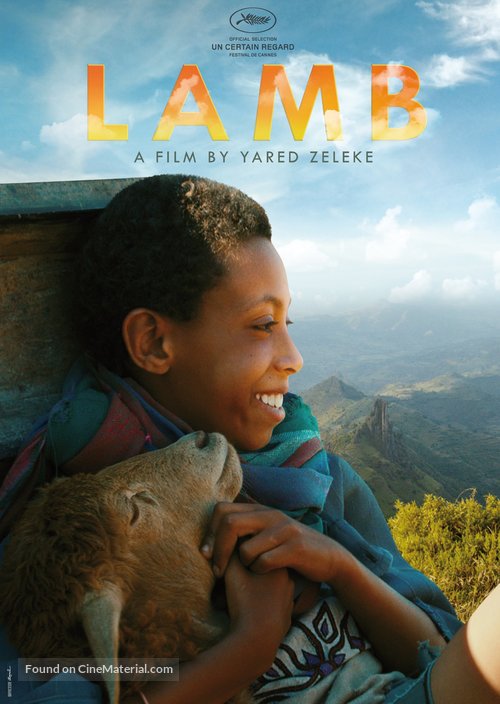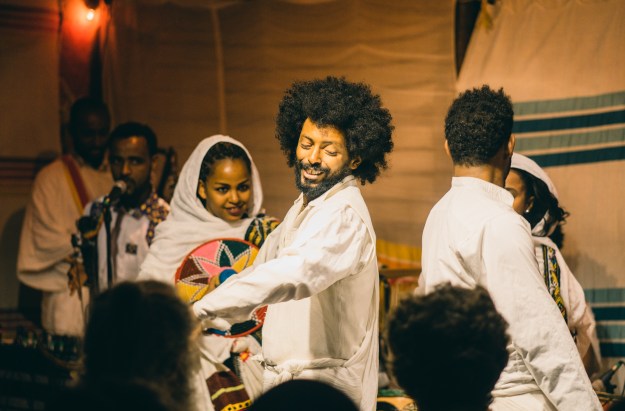Ethiopia. Human life started here, so, lucky for you, you’ll have thousands of years’ worth of places to go, things to see, and foods to eat. The beauty is not only in the country’s history (and there’s a lot of it), but also in the way of life. Be open, talk to people, go with the flow, and get ready to step outside your comfort zone. You won’t regret it.
What to read and watch:

Fikir Eske Mekabir (Love Unto Crypt) by Haddis Alemayehu
This tragic tale of forbidden love—the story of star-crossed lovers from different social classes—is set in feudal Ethiopia. Known as the Ethiopian Romeo and Juliet, the famous novel is a modern classic in Ethiopian literature and praised for its descriptive imagery of life during that era. The translation doesn’t do justice to the original, but it is still a worthwhile read.
Cutting for Stone by Abraham Verghese
Written by an Ethiopian-born Indian-American doctor, the novel chronicles the lives and loves of conjoined Indian-American twin brothers born in 1950s Addis Ababa. The saga of growing up orphaned and in search of themselves during the political turmoil of 1960s and 1970s Ethiopia takes you on an emotional journey during a tumultuous part of the country’s history.

Lamb directed by Yared Zeleke
The 2015 film follows a young boy, Ephraïm, who after his mother’s death is sent to live with relatives who don’t understand his attachment to his pet lamb. When they want to slaughter the lamb for a holiday feast, Ephraïm does everything to protect his pet and make his way back home. Through the familiar story of a young boy confronting life’s hard truths, the story illuminates the struggles of Ethiopia’s rural peoples and celebrates the culture that holds them together. Zeleke’s film was screened at the Cannes Film Festival and the Toronto Film Festival.
Ewir Amora Kelabi (Journey to Israel) directed by Sewmehon Yismaw
Based on the life of Zekarias Mesfin, this 2016 documentary traces the harrowing journey of a young man who tries to walk from Ethiopia to Israel in search of a better life after his mother dies and his father, who worked for the Derg regime, disappears. During his journey Mesfin faces several hardships, including abduction and ending up in an Egyptian jail for years. His journey reflects the stories of many East Africans who, in hopes of prosperity, have traveled a similar path and been subjected to the horrors of human trafficking.
“Abbay” (“Nile”) by Tsegaye Gabre-Medhin
The acclaimed poet laureate of Ethiopia, playwright, and art director, Tsegaye Gabre-Medhin reflects on his pride and love for Africa in this 69-line poem. Gabre-Medhin was a masterful writer and an advocate for the arts. At a young age, he had the honor of seeing his plays staged for Emperor Haile Selassie. Later he focused on developing the country’s national theater.
What to say:
A gursha is a handful of food that is offered to show affection and good wishes.
Gursha: A mouthful of food. Figuratively, it is an act of friendship or love. Because most Ethiopian food is eaten with the hands, a gursha is a handful of food that is offered to show affection and good wishes. The bigger the gursha, the more they love you, so get ready to open wide.
Anchi/ante: “You” for women and men, respectively. It can be used in a sentence, but it can also be used alone as when asking a question or expressing surprise, disgust, and amusement (Anchi?), all depending on the context.
Amesegenalew: “Thank you.” A good phrase to know in any language.
Amesegenalew
N’dayeeee: If you remember no other phrase, remember this one, which happens to be the hardest to translate. It isn’t really a word, but more of a sound used to emphasize shock or disbelief. The more appalled the person is, the longer they draw out the sound.
Beka: “Enough.” Say this when you are full, you’ve had enough of a particular situation, or to end something. Do you want another gursha? Beka. Should I fill up your tank? Beka. You’re calling it a night and about to leave the cafe. Beka. I’ll see you guys next week.
Ferenj
Ferenj: This translates as “foreigner” and is often used to describe those of European descent even though it technically applies to anyone who isn’t Ethiopian or Eritrean.
Know before you go:
- Religion is a big deal.
Ethiopia is one of the oldest Christian nations in the world. The country is also mentioned in the Quran where it is said to have been prophesied as a safe haven for Muslims. It’s also home to a long-standing community of Ethiopian Jews. So it’s no surprise that religion of all kinds is ingrained in daily life. What’s unique is that generally these religions coexist peacefully in Ethiopia. At any given time you will see friends drinking coffee together, one in a hijab, the other with a cross around her neck. A synagogue sits in the center of Addis Ababa, a few miles from an old church and a mosque that have been standing side by side and sharing a gate for decades. This means that any part of the year could be fasting season for one group or another. During Ramadan, food may be difficult to find until sundown in some parts of the city, while during Tsome Nebiyat—when Ethiopian Orthodox Christians forgo animal products—your local butcher might be closed in observance of the fast. Keep the religious holidays in mind as you plan your trip.


- Ethiopia is defined by its cafe culture.
This is the land of buna (coffee), where it was cultivated in the 15th century in its namesake region Kaffa. Traditionally, coffee is served multiple times a day in homes and restaurants and in front of quaint street-corner shops where time languidly passes by as you sip on one cup after the next. Add Italian and French influences to the mix, and you have thousands of coffee shops and cafes where their cities and towns come to life. You can find Parisian- and Italian-style cafes with outdoor seating, good for people-watching over a cup and some pastries. Or you can take a seat at a local buna bet (coffee house), where the coffee is bottomless—just like the neighborhood gossip.
- Drive-ins never went out of style.
Remember those old 1950s American drive-in restaurants with carhop services? Well, there are no waitresses on skates bringing burgers and shakes to your car, but we have a similar concept. It’s normal here to get food and drinks delivered to your car. Many restaurants and cafes, like La Parisienne and the legendary Bole Mini, have parking lots facing the establishment; in addition to the bustling tables inside or on the patios, there will often be a line of parked cars with patrons enjoying sandwiches, peanut tea, and cappuccinos on real dining ware. And, as in the cafes we’re obsessed with, we are probably trading information and gossip.

- Time is told differently here.
Write down everything you’ve been taught about telling time. Now throw it out the window. In Ethiopia the concept of a day is different from the international standard. It doesn’t start at midnight but at dawn—which in our part of the world is always roughly 7 a.m. When the sun rises, it is officially the beginning of a new day or 1 in the morning; the day ends at 12 at night, which is 6 a.m. So when someone asks you to meet them for coffee at 3 in the morning, they really mean 9 a.m. The Ethiopian calendar, based on the Coptic calendar, is also very different from the calendar used by most of the rest of the world. There are 13 months instead of 12, which is where the adage (and great tourism slogan) “The Land of 13 Months of Sunshine” comes from. The Ethiopian calendar has 12 months of exactly 30 days and a 13th month of five to six days at the end of the year. Simple, right? It would be except the calendar year starts in September, New Year’s Day being the 12th of the month. If you aren’t confused yet, here’s another twist: The calendar also uses a different calculation for the birth of Jesus, making it about seven to eight years behind the widely used Gregorian calendar. Sadly, none of this slows aging.
- Ethiopia has the best Italian food you will ever have. Seriously.
Ethiopia’s war with Italy was short-lived, but the Italian influences on our food have endured. Many Italians settled in the country after the war in the early 1900s and intermarried with the locals, fusing the two cultures. The famous Castelli Restaurant, an Addis Ababa landmark that was opened by an Italian soldier, has been serving authentic Italian dishes for over 70 years. For generations people have clamored to dine at its historic tables. Newer restaurants, such as Arcobaleno Bar & Restaurant and Makush Art Gallery and Restaurant are now popping up with modern twists on old favorites, like pasta al asmarino, named for neighboring capital Asmara, Eritrea.

- Pack for every climate.
It can get hot under the blazing Ethiopian sun. It can also get frigid. Ethiopia’s landscape is vast—from mountains to rift valleys and rainforests to deserts. The terrain varies, and so does the weather. Here you can visit the Danakil Depression, the hottest place on Earth, or find yourself shivering at night, thanks to the high altitude in parts of the country. The rainy season, which lasts half the year, often floods the streets. Be prepared for all kinds of weather.
- We like to party.
Ethiopia is a religious country, but many cities are party towns. Bars and clubs are ubiquitous in cities like Addis, Mekele, and Hawassa often stay open into the wee hours of the morning. If you’re looking for more classical Ethiopian entertainment, visit an azmari bet, late-night bars where musicians play traditional instruments and sing in riddles (think Game of Thrones and medieval minstrels). The players showcase their freestyle talents, drawing inspiration from audience members who offer up tips. The riddles are clever and can be risqué—sometimes even insulting if you’re a bad tipper.


- Our animals are one of a kind.
Safaris are not as popular in Ethiopia as they are in some other African nations, but there is a plethora of rare wildlife found only in this country. From the infamous black-maned lion to the Ethiopian red fox, there are many national parks and sanctuaries, like the Babile Elephant Sanctuary and the Yabelo Wildlife Sanctuaries, where you can see unique and endangered species as well as contribute to conservation efforts. Ensessa Kotteh is a wildlife rescue, conservation, and education center, about 19 miles from Addis, where visitors can get up close with hyenas, cheetahs, lions, and more. Ethiopia is also a popular bird-watching destination.
- Stargazers, take note.
Ethiopia has a long history of stargazing. In fact, some historians suggest that astronomy originated here. Thousands of years before modern religion, Ethiopian pagan cultures believed in celestial bodies. Today the country is home to East Africa’s only space observatory, the Entoto Observatory and Research Center. Atop the 10,500-foot Mount Entoto, it overlooks Addis Ababa and welcomes visitors year-round. The surrounding landscape and the lack of light pollution make the observatory the best place to see the stars, including Orion’s Belt.